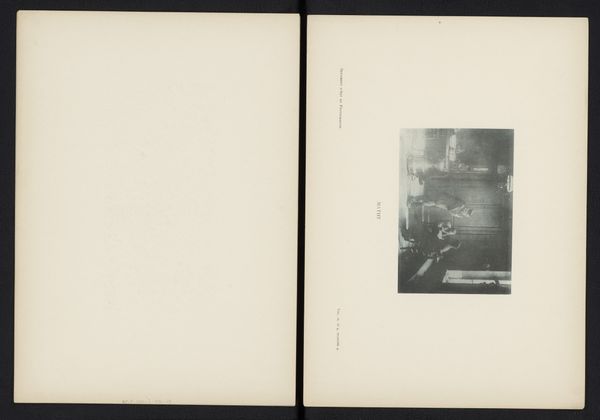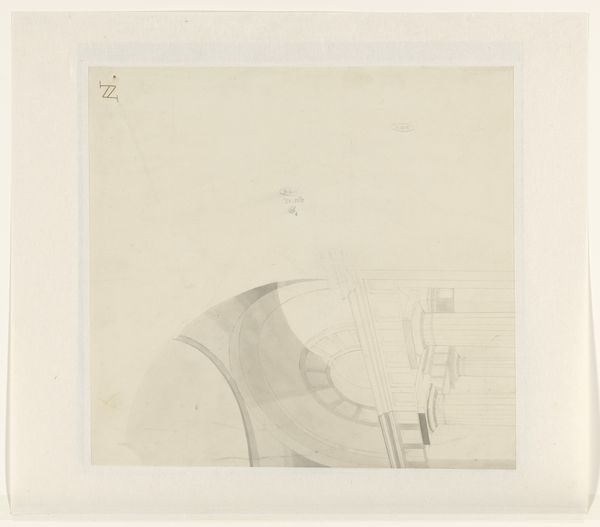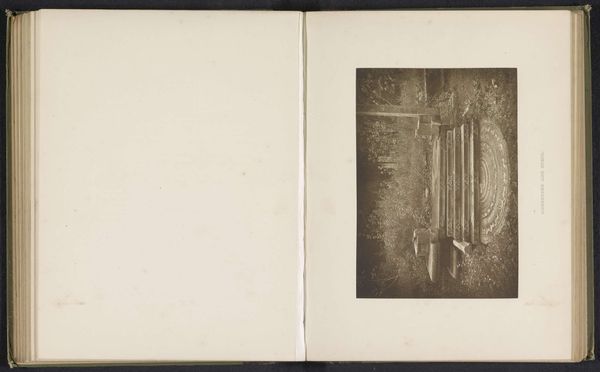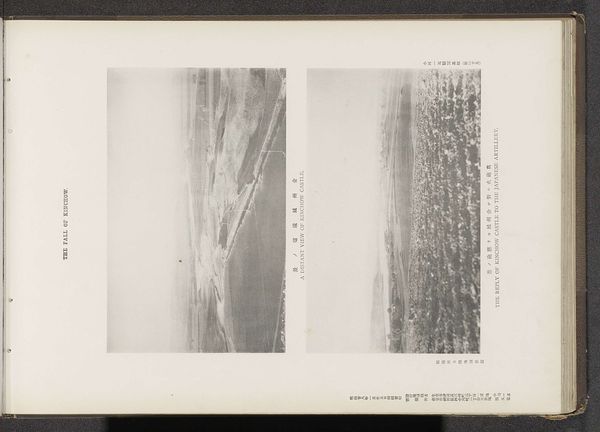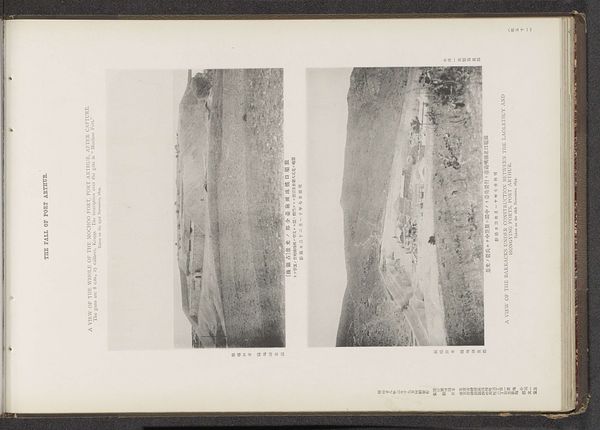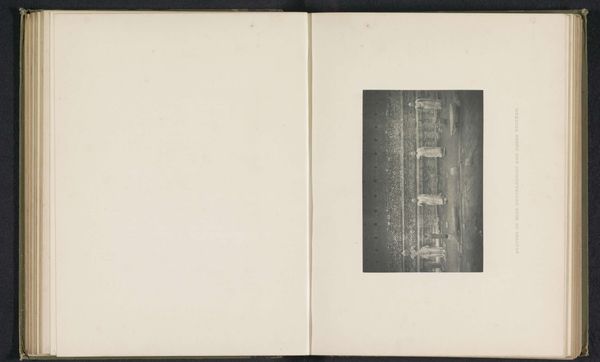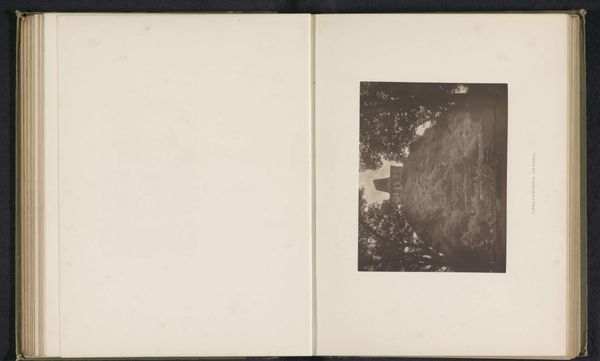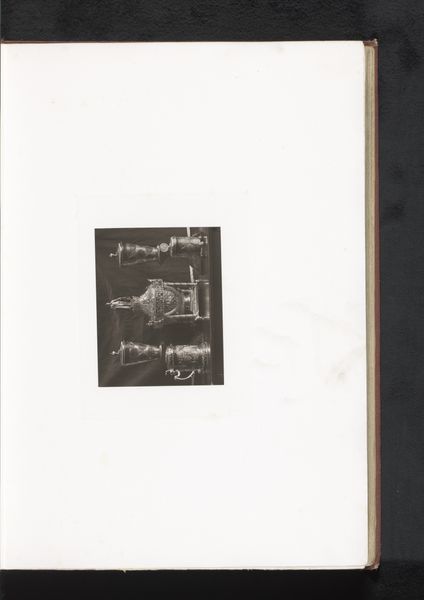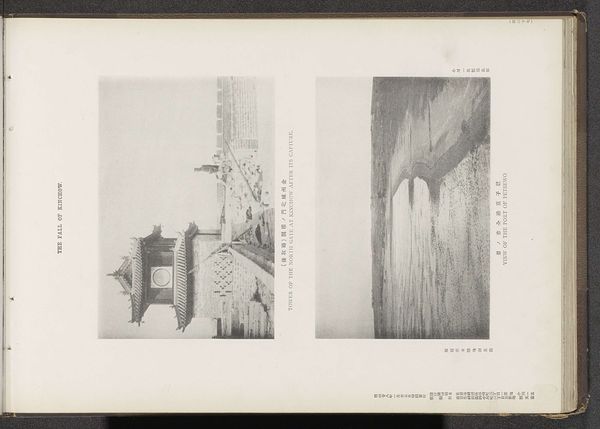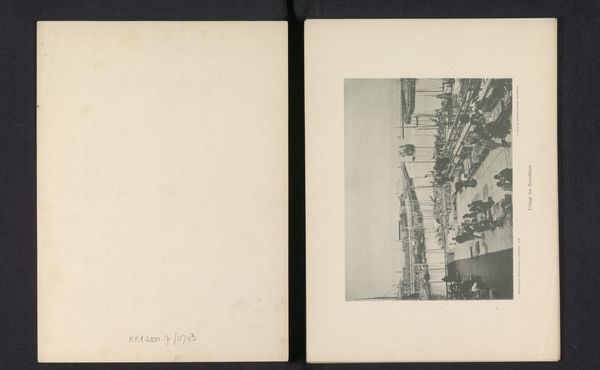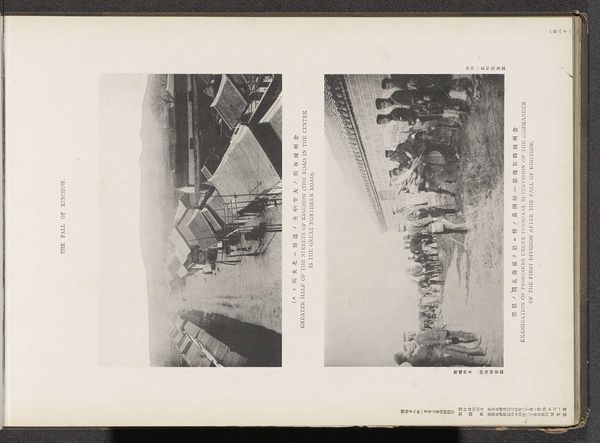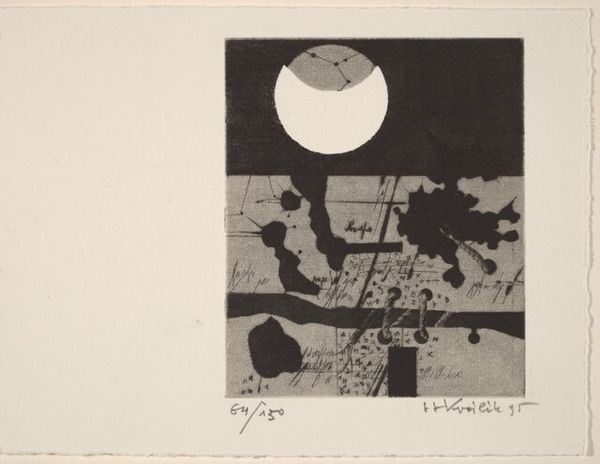
#
art work
#
shape in negative space
#
negative space
#
incomplete sketchy
#
lack of negative space
#
tattoo art
#
abstract art
#
tonal art
#
a lot negative space
#
remaining negative space
Dimensions: image (top): 13.9 × 10.3 cm (5 1/2 × 4 1/16 in.) image (bottom): 8 × 19.7 cm (3 1/8 × 7 3/4 in.) mount: 30.5 × 31.7 cm (12 × 12 1/2 in.)
Copyright: National Gallery of Art: CC0 1.0
Curator: Before us we have "Maquette, page 1," created sometime between 1935 and 1944 by Nathan Lerner. It presents as a page with two contrasting compositions. Editor: My first thought? Restless energy contained in tight little boxes. A frantic kind of poetry, almost. It’s minimal but feels loud. Curator: Loud! I love that. Considering Lerner’s focus, the "loudness" perhaps comes from the material experiment; photograms without a camera obscura and exploiting what’s remaining in the dark room after an overexposed picture. It almost undermines our usual associations with photograms from the Bauhaus. Editor: The Bauhaus connection is fascinating; is there a particular technique he used, that highlights this materiality, that you could describe? Curator: Nathan Lerner attended the New Bauhaus school and learned Man Ray’s photogram technique. These are like that technique turned inside out. Look how the contrast between positive and negative space almost renders these forms unrecognizable, they nearly dissolve! It makes one think about light not just as illumination, but as material itself. Editor: Absolutely. And even the idea of labor comes through – that darkroom, the waiting, the exposure itself as a kind of repetitive action. Makes you reconsider mass-produced photo material that usually flattens and obscures this idea, that has usually become a symbol for accessibility to the many instead. Curator: Right, because photography then, becomes less about capturing a scene and more about this alchemy of light and surface. It’s an art of controlled accidents and seeing with new eyes. You mentioned accessibility? Editor: Yes. The question arises: accessible or manipulative. Can the same dark room techniques become as much of an apparatus to manipulate perception and image? To construct meaning, therefore value? The relationship of that light in the room. Curator: A poignant point on manufactured meaning! Thinking about "Maquette, page 1", perhaps Lerner asks us to find our own story within the light and shadow. Editor: To experience our own quiet moment within those darkrooms, and find meaning from that alchemy.
Comments
No comments
Be the first to comment and join the conversation on the ultimate creative platform.
